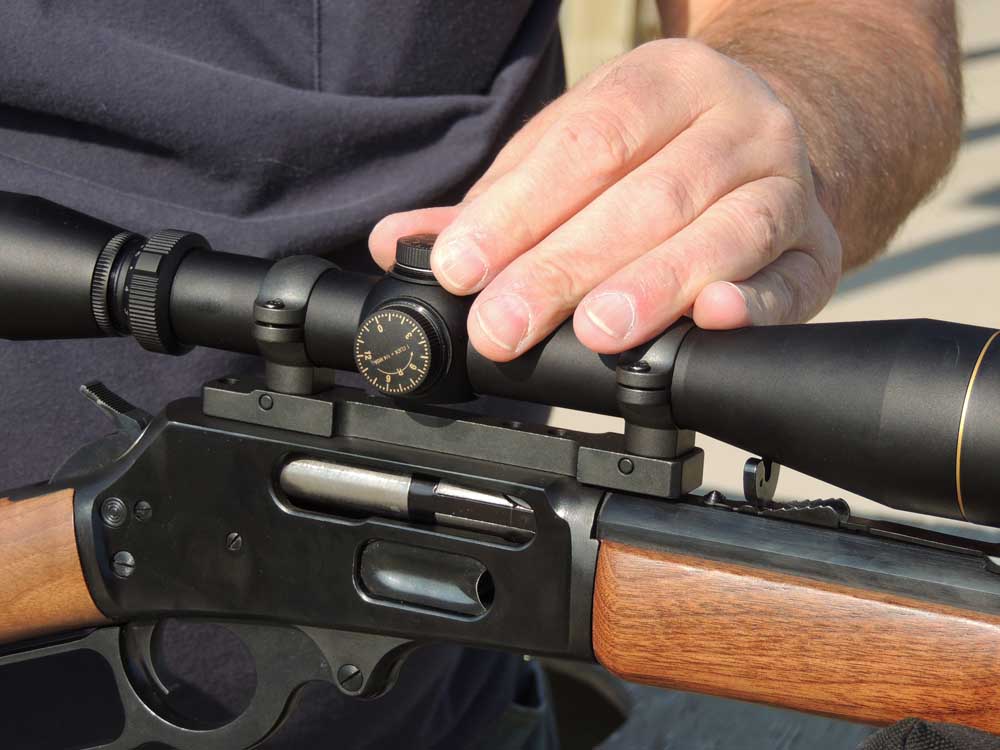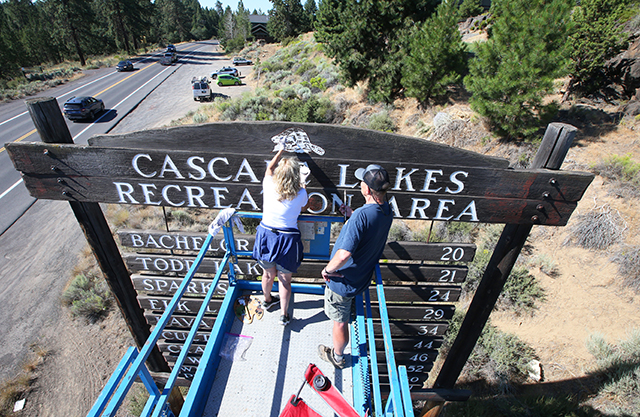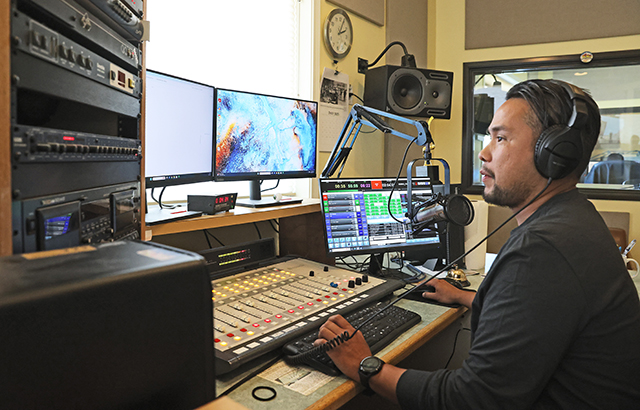Setting sights on deer and elk season
Published 12:00 am Wednesday, August 26, 2015

- Gary Lewis / For The BulletinRod Martino adjusts the scope sight on a Marlin lever-action in preparation for an upcoming hunt.
Rod Martino’s first bullet hit about 4 inches out from the bull’s-eye.
“Not bad!” He said.
Trending
Martino moved the elevation turret about 20 clicks and made a small adjustment in windage. Two more shots and the gun was sighted-in; after six, he had a four-shot cluster, all holes touching.
We’ll be in stands on a bear hunt in Minnesota within a few days. Martino will tote his lever-action Marlin 1895 45-70, and I’ll carry a bolt-action 30-06. Since our shots will likely be at close range, we confirmed our loads at 25 and 50 yards.
Trips to the range or out to the desert and an early season hunt or two are the best ways to get ready for October deer and elk seasons.
This is the time of year to put the gear in totes and look at what is necessary, what can be left behind and what needs to be replaced. For optics, a High Desert hunter is best served with a binocular (on a chest harness), a spotting scope, a rifle scope and a range finder.
Optics, rifle and ammo aside, I group the gear into three different types: a daypack, a truck kit and camping equipment.
I have two daypacks: one for short jaunts and one for backcountry when heavy optics will be employed, or when there might be a need to overnight beneath the stars.
Trending
The contents? A Whistles for Life safety whistle, a Brunton compass, latex gloves, a Clif Bar, hand warmers, a small first-aid kit, a lighter, matches, fire-starting material, earplugs, a lens cloth, a water bottle, an Aquamira water filter straw, surveyor’s flagging, a small LED light, a map, Tenacious Tape patches, a Camovat Cravat (to use as a bandana or a sling or a filter), a Garmin GPS unit, a Nightstick Tac light, a Coast headlamp and extra batteries.
Note: I have two navigating devices, two fire-starting devices and three lights.
Thus equipped and minus lunch, the ALPS daypack weighs 5 ½ pounds. With a sleeping bag and pad or a spotting scope and tripod, I employ the larger pack. The daypack goes everywhere, and I never take it off except to use it as a pillow.
In September, the truck is stocked with a come-along (for pulling people out of ditches and trees out of roads) and a tow strap (I’ve used it way too much), a fire extinguisher and a shovel (I get stuck a lot). And with backcountry roads, being what they are, it’s a good idea to check the spare tire and jack.
Carrying extra water and a Meal-Ready-to-Eat are also good ideas. It’s a bad day if I have to eat the MRE. In a small cooler, I keep MTLPs (meals that take longer to prepare but taste better).
In the truck there’s a first-aid kit, gloves, a sleeping bag and game bags. Because I often find myself in poison oak country, I pack a bottle of Tecnu Extreme to wash up with.
No matter what else is on the calendar, any year I hold a controlled hunt tag for mule deer, that’s the main event.
The rifle deer season begins Oct. 3. That leaves five weeks to get ready. It starts at the range.
The Central Oregon Shooting Sports Association will host its annual Hunter’s Sight-In Workshop on Sept. 12 and 13 from 9 a.m. to 4 p.m. Range officers will provide assistance to adjust scope and iron sights. Targets, shooting benches and a covered firing line are provided. There is a $7 fee per gun for nonmembers, $5 for members. Bring eye and ear protection.
To find COSSA, travel east on U.S. Highway 20 toward Burns. The shooting park is located a half mile past milepost 24 on the north side of the highway.
— Gary Lewis is the host of Frontier Unlimited TV and author of John Nosler — Going Ballistic, Fishing Mount Hood Country, Hunting Oregon and other titles. Contact Gary at www.GaryLewisOutdoors.com.







